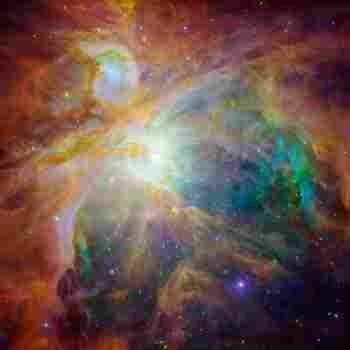3.b) Types of energy
The classical idea that energy neither can appear nor disappear only transforms is more an epistemological principle than a physical one. In fact, this characteristic of types of energy can apply to all physical reality, unless we accept matter can transform into nothing and vice versa.
For example, Principle of Energy Conservation is consistent with what we already know from the equation of equivalence between mass and energy, that electromagnetic waves are a violation of the law of conservation of mass. However, we need conceptual corrections about the meanings of equivalence, mass, and energy.
We can redirect principles of conservation of energy, matter, and mass to a single and more general principle, the Principle of Global Conservation.
Energy concept within Global Physics new perspective implies types of energy according to their supporting medium –Global Aether and LUM Aether (Luminiferous, universal, and mobile)– and the types of movements described in the book Physics and Global Dynamics in its corresponding section.
| Types of movement Motion of Global Aether |
Types of energy Global Physics |
Types of energy Modern Physics |
|
|
|
|
|
|
|
|
|
|
|
| Types of movement Propagation of light |
Types of energy Global Physics |
Types of energy Modern Physics |
|
| |
|
|
|
|
|
|
| Types of movement The motion of mass |
Types of energy Global Physics |
Types of energy Modern Physics |
|
|
|
|
|
|
|
|
|
|
We have tried to present the most significant types of energy. In fact, some types of energy repeat many times because we have kept the classification of types of motion to show the whole model.
As can be seen above, four different types of reticular energy exist so far:
- Longitudinal elastic tension energy
- Longitudinal curvature elastic energy
- Transverse elastic tension energy
- Reversible deformation elastic energy by loops and the compression of Global Aether
Global Mechanics explains how transverse energy transforms into the tension of the longitudinal curvature and reversible deformation energy by compaction and compression of Global Aether when transforming from electromagnetic energy to mass, and vice versa. Elastic energy of Global Aether would be the primary or essential energy from which the rest could derive.
The phase of Global Aether in which kinetic energy exists is mass, not only increasing it but also changing its spatial configuration. We could say that provides a spheroid shape causing mass motion through its interaction with Global Aether (gravitational - kinetic - mass), as explained in the book Physics and Global Dynamics.
In any case, there are small details of this model, which we can renormalize; that is, we can change without affecting the performance of the model.
Weak and strong nuclear interactions are not on the table since we consider them similar to the gravito-magnetic energy of the atom. Likewise, chemical energy would be similar to the gravito-magnetic energy of the atom, but at a molecular level.
(Public domain image)

Another exciting and somewhat risky aspect is the configuration of heat energy as electromagnetic energy –transversal energy– that does not relax with the appearance and disappearance of electrons and causes movement of electrons along their orbits and swinging movement of the nucleus of the atom and molecules.
In general, when heat energy rises, the dance of wavons also increases, as well as, in some cases, the emitted electromagnetic energy, just as in storms. In other cases, the rise of kinetic energy or speed of the molecules of gases occurs, depending on the ease of conversion from one type of energy to another.
Once the model is complete, covering the reticular structure of matter and the elementary particles to stars and black holes, we can observe its dynamic balance. Its parts come from transformations of one type of energy into another or, in other words, variations of elastic or energy properties of the Global Aether (kinetic, gravitational).
Let us remind that LUM Aether (Luminiferous, universal, and mobile) –gravity field– is a dynamic property of the Global Aether.
